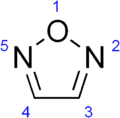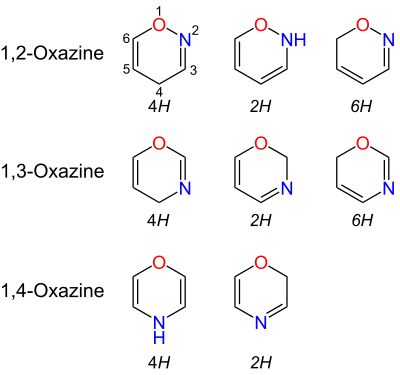Non-protein organic fluorophores belong to following major chemical families:
Xanthene derivatives: fluorescein, rhodamine, Oregon green, eosin, and Texas red
 Xanthene (9H-xanthene, 10H-9-oxaanthracene) is a yellow organicheterocyclic compound. Its chemical formula is C13H10O. It is soluble in diethyl ether. Its melting point is 101-102 °C and its boiling point is 310-312 °C. Xanthene is used as a fungicide and it is also a useful intermediate in organic synthesis.
Xanthene (9H-xanthene, 10H-9-oxaanthracene) is a yellow organicheterocyclic compound. Its chemical formula is C13H10O. It is soluble in diethyl ether. Its melting point is 101-102 °C and its boiling point is 310-312 °C. Xanthene is used as a fungicide and it is also a useful intermediate in organic synthesis.

Cyanine is a non-systematic name of a synthetic dye family belonging topolymethine group. The word cyanin is from the English word “cyan", which conventionally means a shade of blue-green (close to "aqua") and is derived from the Greek “kyanos" which means a somewhat different color: "dark blue".
 Squaraine dyes are a class of organic dyes showing intense fluorescence, typically in the red and near infrared region (absorption maxima are found between 630 and 670 nm and their emission maxima are between 650–700 nm). They are characterized by their unique aromatic four membered ring system derived from squaric acid. Most squaraines areencumbered by nucleophilic attack of the central four membered ring, which is highly electron deficient. This encumbrance can be attenuated by the formation of arotaxane around the dye to protect it from nucleophiles. They are currently used as sensors for ions and have recently, with the advent of protected squanaine derivatives, been exploited in biomedical imaging.
Squaraine dyes are a class of organic dyes showing intense fluorescence, typically in the red and near infrared region (absorption maxima are found between 630 and 670 nm and their emission maxima are between 650–700 nm). They are characterized by their unique aromatic four membered ring system derived from squaric acid. Most squaraines areencumbered by nucleophilic attack of the central four membered ring, which is highly electron deficient. This encumbrance can be attenuated by the formation of arotaxane around the dye to protect it from nucleophiles. They are currently used as sensors for ions and have recently, with the advent of protected squanaine derivatives, been exploited in biomedical imaging.
 Naphthalene is an organic compoundwith formula C10H8. It is the simplestpolycyclic aromatic hydrocarbon, and is a white crystalline solid with a characteristic odor that is detectable at concentrations as low as 0.08 ppm by mass. As an aromatichydrocarbon, naphthalene's structure consists of a fused pair of benzene rings. It is best known as the main ingredient of traditional mothballs.
Naphthalene is an organic compoundwith formula C10H8. It is the simplestpolycyclic aromatic hydrocarbon, and is a white crystalline solid with a characteristic odor that is detectable at concentrations as low as 0.08 ppm by mass. As an aromatichydrocarbon, naphthalene's structure consists of a fused pair of benzene rings. It is best known as the main ingredient of traditional mothballs.
Coumarin derivatives

Coumarin (/ˈkuːmərɪn/; 2H-chromen-2-one) is a fragrant organic chemical compound in the benzopyrone chemical class, which is a colorless crystalline substance in its standard state. It is a natural substance found in many plants.

Furazan, or 1,2,5-oxadiazole, is anheterocyclic aromatic organic compoundconsisting of a five-atom ring containing 1 oxygen and 2 nitrogen atoms. The furazan ring system is also found in the steroid furazabol. Furazan and its derivatives are obtained from the oximederivatives of 1,2-diketones.
 Anthracene is a solid polycyclic aromatic hydrocarbon (PAH) of formula C14H10, consisting of three fusedbenzene rings. It is a component of coal tar. Anthracene is used in the production of the red dyealizarin and other dyes. Anthracene is colorless but exhibits a blue (400-500 nm peak) fluorescence under ultraviolet light.
Anthracene is a solid polycyclic aromatic hydrocarbon (PAH) of formula C14H10, consisting of three fusedbenzene rings. It is a component of coal tar. Anthracene is used in the production of the red dyealizarin and other dyes. Anthracene is colorless but exhibits a blue (400-500 nm peak) fluorescence under ultraviolet light.

Pyrene is a polycyclic aromatic hydrocarbon (PAH) consisting of four fused benzene rings, resulting in a flataromatic system. The chemical formula is C16H10. This colorless solid is the smallest peri-fused PAH (one where the rings are fused through more than one face). Pyrene forms during incomplete combustion of organic compounds.
Acridine derivatives: proflavin, acridine orange, acridine yellow, etc.
 Acridine is an organic compound and anitrogen heterocycle with the formula C13H9N. Acridines are substituted derivatives of the parent ring. It is a planar molecule that is structurally related to anthracene with one of the central CH groups replaced by nitrogen. Like the related molecule pyridine and quinoline, acridine is mildly basic. It is an almost colorless solid. There are no commercial applications of acridines but at one time acridine dyes were popular. It crystallizes in needles.
Acridine is an organic compound and anitrogen heterocycle with the formula C13H9N. Acridines are substituted derivatives of the parent ring. It is a planar molecule that is structurally related to anthracene with one of the central CH groups replaced by nitrogen. Like the related molecule pyridine and quinoline, acridine is mildly basic. It is an almost colorless solid. There are no commercial applications of acridines but at one time acridine dyes were popular. It crystallizes in needles.
 Auramine O is a diarylmethane dyeused as a fluorescent stain. In its pure form, Auramine O appears as yellow needle crystals. It is very soluble in water and soluble in ethanol.
Auramine O is a diarylmethane dyeused as a fluorescent stain. In its pure form, Auramine O appears as yellow needle crystals. It is very soluble in water and soluble in ethanol.
Tetrapyrrole derivatives: porphin, phthalocyanine, bilirubin
Xanthene derivatives: fluorescein, rhodamine, Oregon green, eosin, and Texas red



Naphthalene derivatives (dansyl and prodan derivatives)







Tetrapyrroles are a class of chemical compounds whose molecules contain four pyrrole rings held together by directcovalent bonds or by one-carbon bridges (=(CH)- or -CH2-units), in either a linear or a cyclic fashion. A pyrrole ring in a molecule is a five-atom ring where four of the ring atoms are carbon and one is nitrogen. In cyclic tetrapyrroles, lone electron pairs on nitrogen atoms facing the center of the macrocycle ring can bond or chelate with a metal ion such as iron,cobalt, or magnesium.



No comments:
Post a Comment